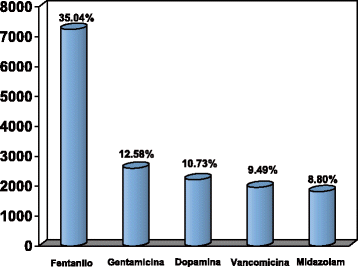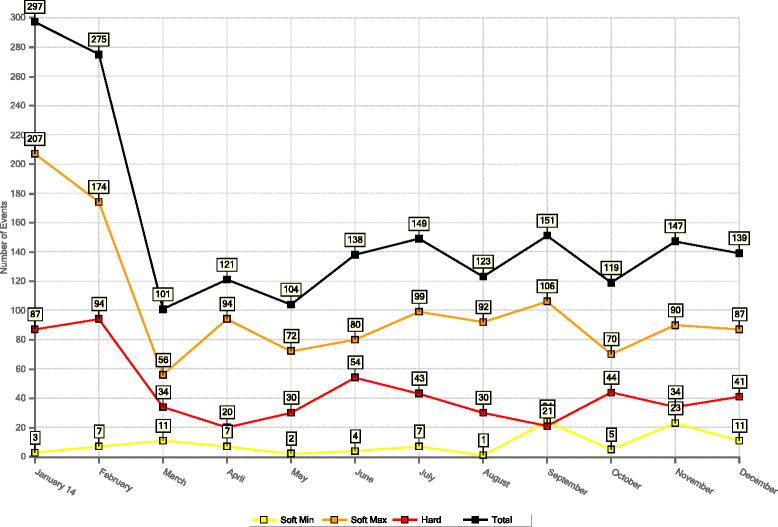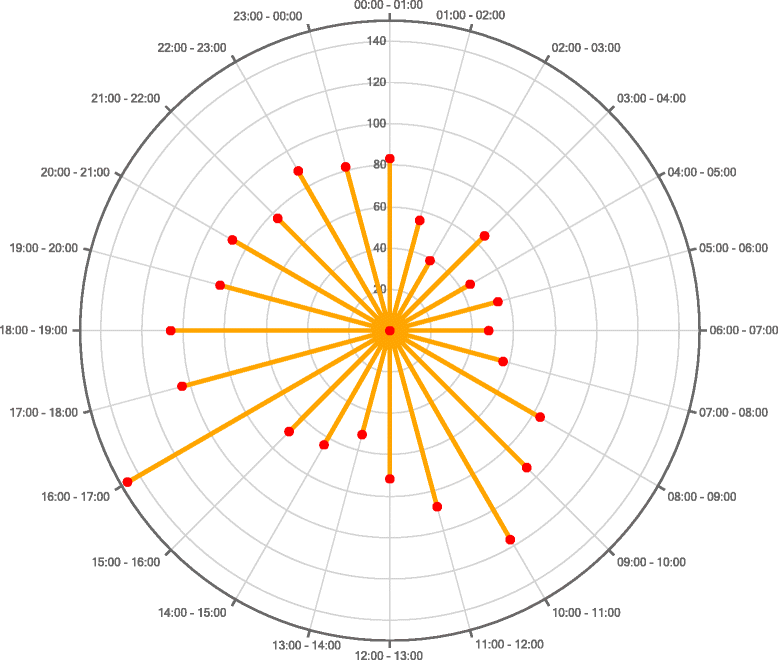Smart pumps and random safety audits in a Neonatal Intensive Care Unit: a new challenge for patient safety
- PMID: 26654316
- PMCID: PMC4676130
- DOI: 10.1186/s12887-015-0521-6
Smart pumps and random safety audits in a Neonatal Intensive Care Unit: a new challenge for patient safety
Abstract
Background: Random safety audits (RSA) are a safety tool enabling prevention of adverse events, but they have not been widely used in hospitals. The aim of this study was to use RSAs to assess and compare the frequency of appropriate use of infusion pump safety systems in a Neonatal Intensive Care Unit (NICU) before and after quality improvement interventions and to analyse the intravenous medication programming data.
Methods: Prospective, observational study comparing the frequency of appropriate use of Alaris® CC smart pumps through RSAs over two periods, from 1 January to 31 December 2012 and from 1 November 2014 to 31 January 2015. Appropriate use was defined as all evaluated variables being correctly programmed into the same device. Between the two periods they were established interventions to improve the use of pumps. The information recorded at the pumps with the new security system, also extracted for one year.
Results: Fifty-two measurements were collected during the first period and 160 measurements during the second period. The frequency of appropriate use was 73.13 % (117/160) in the second period versus 0 % (0/52) in the first period (p < 0.0001). Information was recorded on 44,924 infusions; in 46.03 % (20,680/44,924) of cases the drug name was recorded. In 2.5 % (532/20,680) of cases there was an attempt to exceed the absolute limit.
Conclusions: Random Safety Audits were a very useful tool for detecting inappropriate use of pumps in the NICU. The improvement strategies were effective for improving appropriate use and programming of the intravenous medication infusion pumps in our NICU.
Figures



Similar articles
-
[Real-time safety audits in a neonatal unit].An Pediatr (Barc). 2017 Sep;87(3):148-154. doi: 10.1016/j.anpedi.2016.08.005. Epub 2016 Oct 17. An Pediatr (Barc). 2017. PMID: 27765565 Spanish.
-
Auditing of Monitoring and Respiratory Support Equipment in a Level III-C Neonatal Intensive Care Unit.Biomed Res Int. 2015;2015:719497. doi: 10.1155/2015/719497. Epub 2015 Oct 19. Biomed Res Int. 2015. PMID: 26558277 Free PMC article.
-
Implementation of smart pump technology in a paediatric intensive care unit.Health Informatics J. 2015 Sep;21(3):209-22. doi: 10.1177/1460458213518058. Epub 2014 Feb 4. Health Informatics J. 2015. PMID: 24496443
-
Smart infusion technology: a minimum safety standard for intensive care?Br J Nurs. 2008 May 22-Jun 11;17(10):630-6. doi: 10.12968/bjon.2008.17.10.29476. Br J Nurs. 2008. PMID: 18563002 Review.
-
Building a NICU quality & safety infrastructure.Semin Perinatol. 2024 Apr;48(3):151902. doi: 10.1016/j.semperi.2024.151902. Epub 2024 Apr 23. Semin Perinatol. 2024. PMID: 38692996 Review.
Cited by
-
Incidence and Causes of Infusion Alarms in a Neonatal and Pediatric Intensive Care Unit: A Prospective Pilot Study.J Pediatr Pharmacol Ther. 2020;25(6):500-506. doi: 10.5863/1551-6776-25.6.500. J Pediatr Pharmacol Ther. 2020. PMID: 32839653 Free PMC article.
-
Intravenous Medication Administration Safety with Smart Infusion Pumps in the Neonatal Intensive Care Unit: An Observational Study.Drug Saf. 2024 Jan;47(1):29-38. doi: 10.1007/s40264-023-01365-6. Epub 2023 Oct 27. Drug Saf. 2024. PMID: 37889401
-
Determinants of Intravenous Infusion Longevity and Infusion Failure via a Nonlinear Model Analysis of Smart Pump Event Logs: Retrospective Study.JMIR AI. 2023 Sep 13;2:e48628. doi: 10.2196/48628. JMIR AI. 2023. PMID: 38875535 Free PMC article.
-
Types and Frequency of Infusion Pump Alarms and Infusion-Interruption to Infusion-Recovery Times for Critical Short Half-Life Infusions: Retrospective Data Analysis.JMIR Hum Factors. 2019 Aug 12;6(3):e14123. doi: 10.2196/14123. JMIR Hum Factors. 2019. PMID: 31407667 Free PMC article.
-
Smart pumps improve medication safety but increase alert burden in neonatal care.BMC Med Inform Decis Mak. 2019 Nov 7;19(1):213. doi: 10.1186/s12911-019-0945-2. BMC Med Inform Decis Mak. 2019. PMID: 31699078 Free PMC article.
References
Publication types
MeSH terms
LinkOut - more resources
Full Text Sources
Other Literature Sources
Medical

